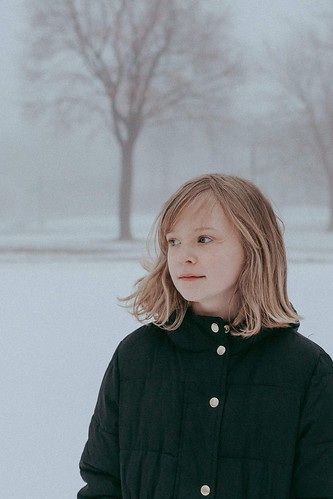Hey bring about hemolytic transfusion reactions [66, 67] through a complement and Fc
Hey bring about hemolytic transfusion reactions [66, 67] by way of a complement and Fc receptorindependent process [68, 69]. Polyclonal antibodies against the KEL2 antigen are clinically considerable in both transfusion and pregnancy scenarios: hemolytic transfusion reactions are mediated by each complement and Fc receptors [70], though hemolytic disease of the fetus and newborn appears to become due a minimum of in component to suppression of erythropoiesis by antiKEL glycoprotein alloantibodies [7].Components Influencing RBC Alloimmunization: Lessons Learned from Murine ModelsTransfus Med Hemother 204;four:406Table two. Recipient variables that may possibly effect RBC alloimmunization Genetic Things MHCHLA type as well as the capacity to present the RBC antigen Degree to which the recipient views the RBC antigen as foreign Polymorphisms of immunoregulatory components (CD8, TRIM two) Inherited illness states (FIIN-2 site autoimmunity, sickle PubMed ID:https://www.ncbi.nlm.nih.gov/pubmed/18930332 cell disease) Immune status Inherited or acquired immune activation Status and phenotypefunction of regulatory immune cell subsets Reticuloendothelial cell considerations, like location of RBC consumption and phenotypefunction of antigenpresenting cells Prior antigen exposures Such as RBC exposures or exposures to nonRBC antigens with overlapping peptide sequences  to RBC antigens Avenue of exposures, like: Transfusion Pregnancy Environmental exposures Mucosal exposures (e.g. for tolerance induction)Recipient Components The human respondernonresponder literature suggests that recipient variables, be they genetic or nongenetic, are quite crucial in determining alloantibody development [0, 3]. Within a given population that may be predisposed to respond, however, donor components may perhaps play essential roles in determining alloantibody responses. Indeed, studies in murine models support that each donor and recipient things play a part in recipient RBC alloimmune responses. Genetically identical recipients respond differently towards the same antigen depending on quite a few elements, such as these depicted in table two and further reviewed beneath. Genetic Factors One particular genetic aspect which has a clear influence on recipient immunity normally are variability in HLA, which affects the ability of recipients to procedure and present particular peptides (derived from RBC antigens) by class I and class II MHC. RBC antigen presentation has been investigated in a couple of human studies, and it really is now thought that HLA restriction does exist for some RBC antigens, for example Fya [6, 72] and potentially Kell [73], but not for other individuals, in unique Rh(D) [59]. Particular HLA forms may well also be far more probably to be related using a `responder’ phenotype [74]. The capacity to predict subsets of sufferers who might benefit from RBCs phenotypically matched at specific loci will be a effective tool, and one particular that could eventually conserve resources [75]. While concerns of MHC restriction for RBC antigens in animal models are just starting to become investigated, a lot of research investigating MHC presentation from the model humoral antigen HEL have been completed over the past 40 years [768]. Certain recipient mouse strains (such as C57BL6 (H2b MHC)) have lowlevel or no responses towards the HEL antigen, whereas other strains (which includes B0.BR, H2k MHC) have higherlevel responses. Variations in donor responses towards the same antigen are thought to involve variable affinity of specific peptide epitopes for distinctive MHC molecules too as variations in recognition of your peptideMHC complicated by the Tcell receptor. Furthermore to.
to RBC antigens Avenue of exposures, like: Transfusion Pregnancy Environmental exposures Mucosal exposures (e.g. for tolerance induction)Recipient Components The human respondernonresponder literature suggests that recipient variables, be they genetic or nongenetic, are quite crucial in determining alloantibody development [0, 3]. Within a given population that may be predisposed to respond, however, donor components may perhaps play essential roles in determining alloantibody responses. Indeed, studies in murine models support that each donor and recipient things play a part in recipient RBC alloimmune responses. Genetically identical recipients respond differently towards the same antigen depending on quite a few elements, such as these depicted in table two and further reviewed beneath. Genetic Factors One particular genetic aspect which has a clear influence on recipient immunity normally are variability in HLA, which affects the ability of recipients to procedure and present particular peptides (derived from RBC antigens) by class I and class II MHC. RBC antigen presentation has been investigated in a couple of human studies, and it really is now thought that HLA restriction does exist for some RBC antigens, for example Fya [6, 72] and potentially Kell [73], but not for other individuals, in unique Rh(D) [59]. Particular HLA forms may well also be far more probably to be related using a `responder’ phenotype [74]. The capacity to predict subsets of sufferers who might benefit from RBCs phenotypically matched at specific loci will be a effective tool, and one particular that could eventually conserve resources [75]. While concerns of MHC restriction for RBC antigens in animal models are just starting to become investigated, a lot of research investigating MHC presentation from the model humoral antigen HEL have been completed over the past 40 years [768]. Certain recipient mouse strains (such as C57BL6 (H2b MHC)) have lowlevel or no responses towards the HEL antigen, whereas other strains (which includes B0.BR, H2k MHC) have higherlevel responses. Variations in donor responses towards the same antigen are thought to involve variable affinity of specific peptide epitopes for distinctive MHC molecules too as variations in recognition of your peptideMHC complicated by the Tcell receptor. Furthermore to.